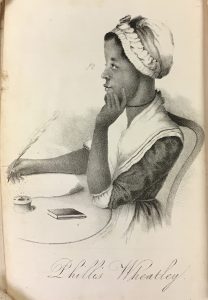Every year on October 31, Columbia College celebrates Charter Day, marking the anniversary of the adoption of the College’s charter. This is the anniversary of the original royal charter of 1754, but not of the current charter which has been in place since April 13, 1787. But in between those two, there was the little-remembered, short-lived charter of 1784, which gave the college the name Columbia.

On April 6, 1776, the Committee on Safety told the governors (as trustees were then called) of King’s College to prepare the College Hall in 6 days for the reception of troops. The King’s College building was turned into a military hospital. Treasurer Leonard Lispenard gave the College the use of a house on Wall Street to finish out the academic year. According to the matriculation book, six students graduated in 1776. There was no public commencement ceremony because of the “turbulence & confusion which prevail[ed] in every part of the Country.” And that was the end of King’s College.
After an eight-year hiatus because of the Revolutionary War, the College’s trustees petitioned the New York State Legislature to reopen under a new charter and a new name. The March 24, 1784 petition asked for a revision of the charter, since many parts of the royal charter “are inconsistent with that Liberality and that Civil and religious Freedom which our present happy Constitution points out.” The new constitution for New York State meant a new charter for the College. On May 1, 1784, a New York State statute declared “that the College within the City of New York heretofore called King’s College be forever hereafter called and known by the name of Columbia College.” This was the first time the term “Columbia” appeared in any legislation. In fact, the first two official uses of the term come from the New York State Legislature: first with the renaming of King’s College (1784) and then two years later, for the naming of Columbia County (1786) outside of Albany.
At the time, Columbia was a popular name for the new Republic (as opposed to Britannia). It first appeared in a 1775 work by Phillis Wheatley Peters, an enslaved poet living in Massachusetts. She used Columbia as a personified deity in her poem to General George Washington. (George Washington wrote back to Wheatley and they later met in person.) Wheatley’s poem was printed in the Pennsylvania Magazine in April 1776 and circulated widely during the Revolutionary period. The term later gained popularity because of the song “Columbia, Columbia, to glory arise” by the Rev. Dr. Timothy Dwight (1777). The Revolutionary army song served as an unofficial anthem of sorts before “The Star Spangled Banner.” For a College that was looking to move away from “King’s” and any connection to the British, the word Columbia had a nice Revolutionary ring to it.
The charter of 1784 was not the first proposed revision to the original 1754 royal charter. Ten years earlier, in 1774, the College had drafted a revised charter, which was submitted to the Earl of Dartmouth, the Principal Secretary of State for the American Department. This charter called for a university system, based on the Oxford model, with one president and one set of trustees overseeing a number of colleges throughout the Province of New York. John Vardill, a former faculty member, was even sent to England to lobby for the charter’s approval. And while the revision reached the Privy Council in April 1775, the war put an end to its progress. The name for the new institution would have been American University. After the Revolutionary War and under a new “happy Constitution,” it makes sense that the Trustees of 1784 opted for the more patriotic name, Columbia College.